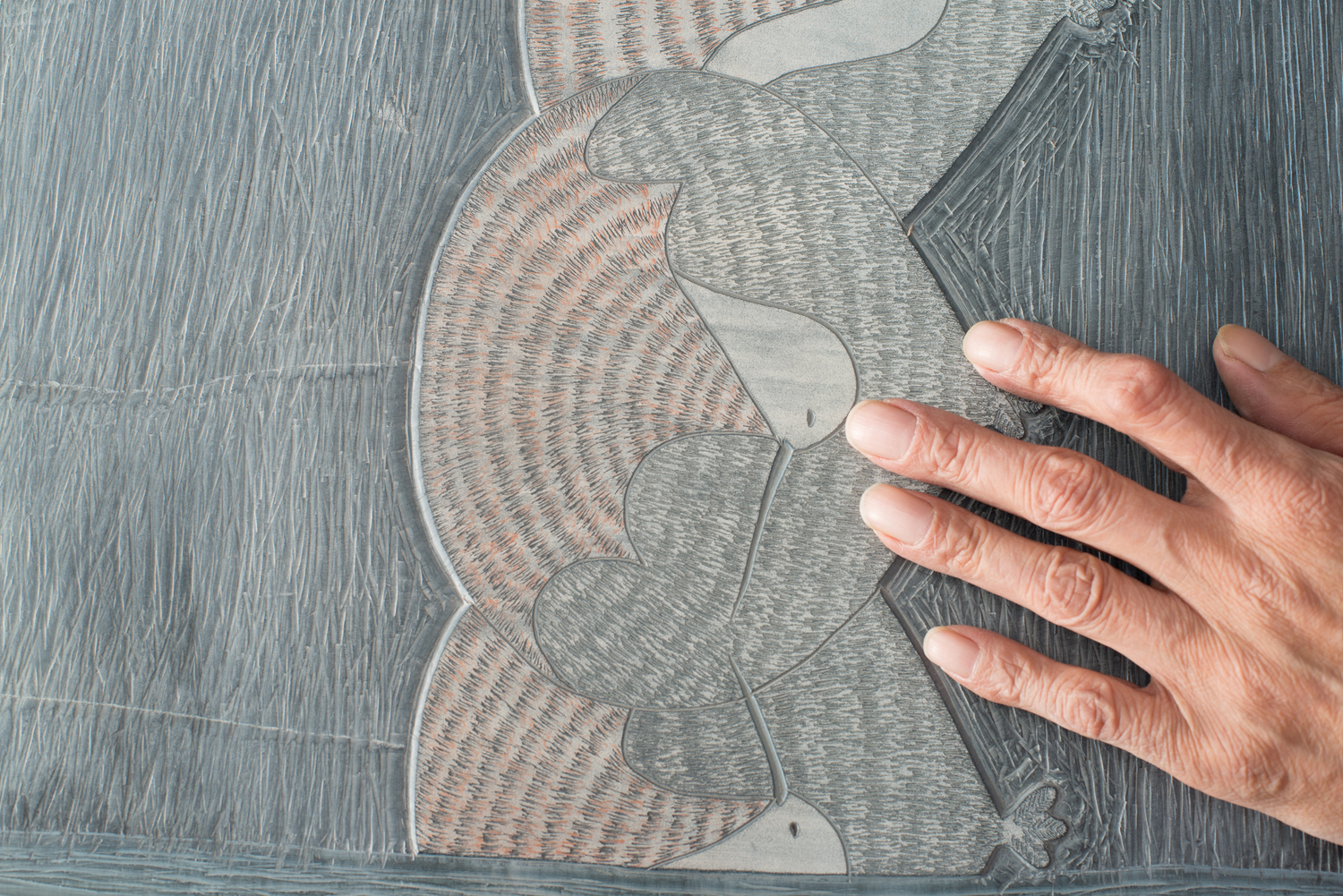Kinngait Studios
The West Baffin Eskimo Cooperative in Kinngait (Cape Dorset) has earned a worldwide reputation for the quality and originality of limited edition prints made by its member artists. Every year since 1959 the printmaking studios (now known as Kinngait Studios) have released an annual catalogued collection of between 30 and 60 images as well as numerous commissions and special releases. Kinngait Studios is the longest continuous running print studio in Canada.
Although the graphic abilities of many Inuit were recognized early on from incised ornaments and tools as well as appliqued garments and bags, very little works on paper were done prior to the inception of the printmaking program in the late 1950’s.
Much of the success of the formative years of printmaking in Kinngait can be attributed to James Houston, an artist from Toronto who left the cosmopolitan south with his wife Alma and their two young sons in 1952 and lived the better part of the next 10 years in Kinngait. Apparently James Houston was a heavy smoker and one day Oshweetok Ipeelie, a skilled hunter and carver of walrus tusks, picked up an empty cigarette package and remarked upon the supreme patience and skill of the man who drew with painstaking precision the identical image of a sailor on each and every pack. Houston tried to explain how multiple images are made and then began to demonstrate the fundamental principles of printmaking by rubbing soot over an incised walrus tusk. He then pressed a few sheets of toilet paper over the image and pulled a few simple prints whereupon Ipeelie amazed and delighted exclaimed, “We can do that.” Thus began a quest to find a genuine, indigenous and appropriate means of printmaking.
Although several small editions of sealskin stencils were produced it was a cumbersome and limiting process. However it was discovered that the local carving stone used for sculpture was an ideal medium for relief printing and eventually the stone cut technique became the most common media of printmaking in Kinngait. Later on the technique of engraving was introduced and in the 1970’s the first litho press was set up. In recent times, stone cuts, etchings and lithographs have comprised the mediums of each collection thus allowing the artists a greater variety of expression.
Kenojuak Cultural Centre and Print Shop
In 2018, the West Baffin Eskimo Cooperative administrative offices and its Kinngait Studios relocated to the Kenojuak Cultural Centre and Print Shop, a multi-use community facility. This new creation space boast state-of-the-art printmaking and drawing studios all housed in an architecturally compelling environment. A dedicated gallery space presents a program of exhibitions designed to highlight current and historical works of Inuit art from Kinngait Studios in the print, drawing and sculptural media.







